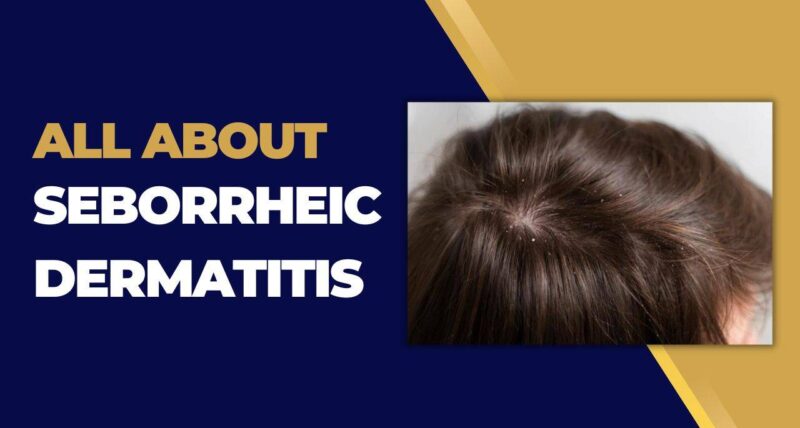An itchy scalp and flaky patches on the head and other body parts can be irritating and embarrassing. The people you know might blame you for not taking care of your skin or suggest you consult a doctor. But none will be able to describe the actual situation or make you understand the reason behind it. Well, someone had to take charge, right? In simple terms, you are going through Seborrheic eczema or Seborrheic Dermatitis. It is a skin condition with the usual effect on the scalp. Other than that, one can also find effects on the upper chest, face, and back (the oily parts of the body). In infants, it is named a crib cap. Usually, you will notice the same in the first few months of the birth, and it goes away with gradual growth. You might be thinking, is seborrheic dermatitis contagious? We have good news. No, it is not.
Seborrheic dermatitis: Causes
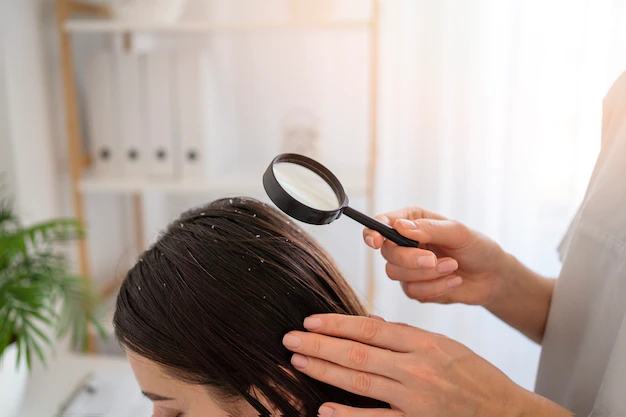
Around 11% of the population experiences seborrheic dermatitis once in a lifetime, either as an infant or when aged between 30 to 60. At the same time, men are more prone to particulars than women.
While the exact cause of seborrheic dermatitis, scalp, or the skin is unknown, doctors have certain theories for us to look at. The excess oil production in the skin and because of the influence of Malassezia fungus in the skin. Changes in the weather, unplanned life choices, and excessive stress can also cause the same.
However, in children, changes in hormonal balance can help trigger similar situations. In case the baby is in the womb, still, then such situations can trigger because of depletions in the hormonal balance of the mother.
Seborrheic dermatitis: Symptoms
The symptoms of seborrheic dermatitis do vary from one person to another and are primarily dependent on their age.
In infants: You will notice patches of greasy scales on the diaper area or the scalp.
In adults: Scales and redness can be seen on the scalp, sides of the nose, eyebrows, chest, groin, armpits, and upper back.
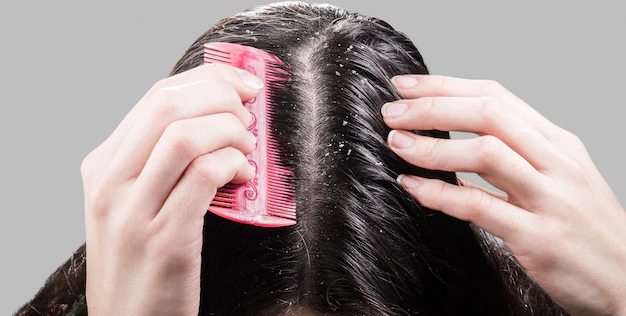
Let’s proceed with the overall symptoms:
- Itchy white flakes on the scalp (dandruff). These flakes come loose and fall on the shoulders or the back when scratched.
- Red scales on the skin.
- Scaly redness at the edge of the eyelids.
- Thick skin or pinkish plaques of scales at the sides of the face.
- Flaky patches on the chest or hairline in the shape of a ring or a flower petal.
- Redness in the creases or folds of the genitals, the area beneath the breast, and the armpits.
- Inflamed follicles of hair on the upper half of the trunk or your cheeks.
Are acne and dandruff related?
So far, we have been looking into the symptoms and causes of seborrheic dermatitis. And did find the growth of the same on various areas of the skin. But do you know of a condition called “seborrheic dermatitis face?” And this brings us to the question are acne and dandruff related? Continue reading to learn more.
Your face and scalp are closely related, so you will often notice dandruff and acne growing simultaneously. There are two specific causes for the same, one can be hormonal changes, and the next can be an increase in oil production.
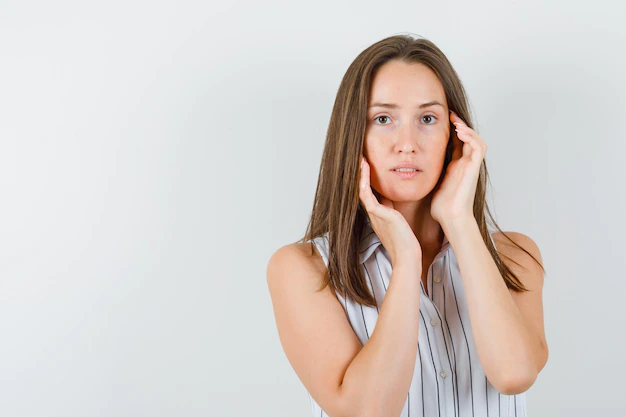
Explaining the facts in detail: Under the hormonal influence, your body produces more oil and gets secreted through pores. Now the dead skin cells come flaking off the scalp and get transferred onto the face. These do clog the pore and triggers acne on the skin.
Also, under the influence of external factors like weather and pollution, the body sends signals for excessive oil production. These get mixed with the white flakes on the scalp, causing acne. This brings us to the answer: yes, dandruff and acne are related.
Reduce dandruff-inflicted acne from your face
Here are some of the general care habits that one can take up to reduce dandruff-inflicted acne on the face. They are as follows:
- Do not let your hair get on your face. If you have bangs in the front, use a hair clip to keep it away from your face.
- Brush your hair at regular intervals to eliminate the flakes and increase blood circulation on your head.
- Use an anti-dandruff shampoo to help you eliminate those embarrassing flakes.
- Take head massages of Argan Oil that will boost your hair health and help you get rid of excessive inflammation.
- You can also apply lime juice on the scalp and the face in diluted form. This will reduce bacterial inflammation on the skin.
- On the other hand, aloe vera also has anti-fungal and anti-inflammatory properties that will help you eliminate dandruff and ease irritated skin.
- Make changes in your diet. Have foods that are rich in vitamins and fatty acids. Reduce the use of carbohydrates.
- Also, regular stress levels have a lot to do with your flare-ups, so indulge in activities that will help you reduce that inner concussion.
Seborrheic Dermatitis in Dogs and Cats
The condition of Seborrheic Dermatitis is also common in dogs and cats. And because we live in with our pets. It is necessary to learn about the same and help them get the right treatment.
In Dogs
Seborrheic Dermatitis in Dogs is most visible in skin areas with high sebaceous glands. The affected area will flake off, visible on the dogs’ bedding and other places they visit. Watch for inflamed and red areas on the skin. They will also have an odor, and the conditions might worsen when you are not treating them well.
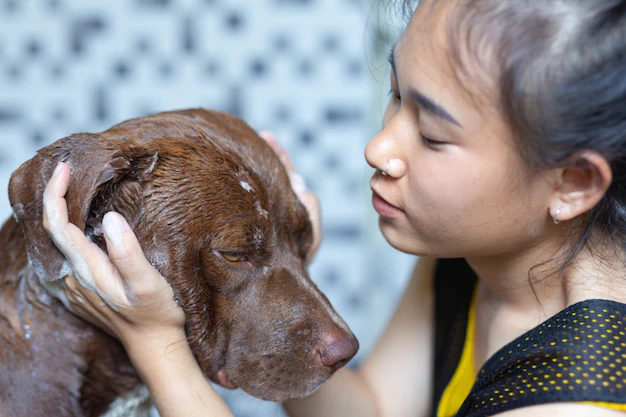
Causes:
- Allergies
- Hormonal imbalances
- Bacterial infections
- Irregularities in diet
- Humidity changes
- Musculoskeletal disease
Diagnosis:
- CBC (Complete blood cell count)
- A skin biopsy or Skin cytology to look for bacteria, inflammatory cells, abnormal cells, yeast, and fungus.
- Hair plucking and skin scrapping to look for parasites (external).
- Culturing of the skin to look for fungal and bacterial infections.
- Hormonal tests.
Treatment:
There is no permanent treatment type for Seborrheic Dermatitis in Dogs. However, to help the animal eliminate such a situation, you can feed them the following items.
- Corticosteroids
- Oral cyclosporine
- Shampoos or sprays with Anti-seborrheic nature
- Supplements of Omega-3 fatty acid
- Antifungals (in case of yeast infections)
In Cats
Because of the thick hair, detecting Seborrheic Dermatitis in cats is difficult. But on combing the hair, you will get to observe symptoms like:
- Flakes resembling dandruff
- Itchy skin
- Odor on the skin
- Inflamed skin
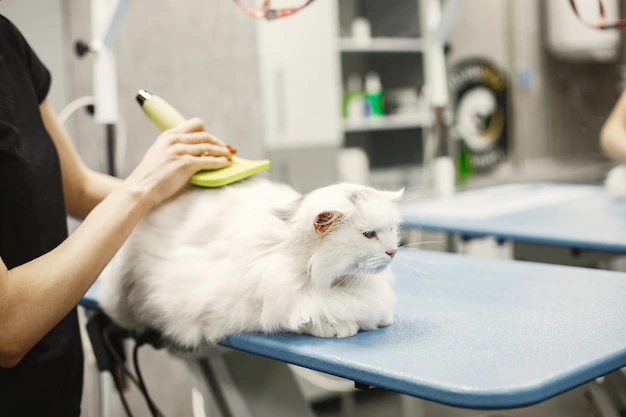
Causes:
- Allergies
- Bacterial and Fungal infections
- Unbalanced diet
- Scabies
- Autoimmune disorders
- Hormonal issues
- Fleas or ticks
Diagnosis:
- Take your cat to the vet if you see a spot on the skin.
- Complete Blood Count (CBC).
- Make arrangements for a skin culture.
- Perform an allergy test
Treatment:
There is no permanent treatment for Seborrheic Dermatitis in Cats. However, to help the animal get rid of such a situation, you can treat them in the following ways.
- Rectify dry Seborrheic with a moisturizing shampoo.
- Treat oily Seborrheic with benzoyl peroxide or coal tar
- Feed Omega 3 fatty acid supplements.
- Adjust the diet of your cat.
So that is all about Seborrheic Dermatitis. Living a healthy life and taking thorough care of yourself and the pets you have will help you get rid of the same. If you have more information regarding the same, let us know in the comment section below.

